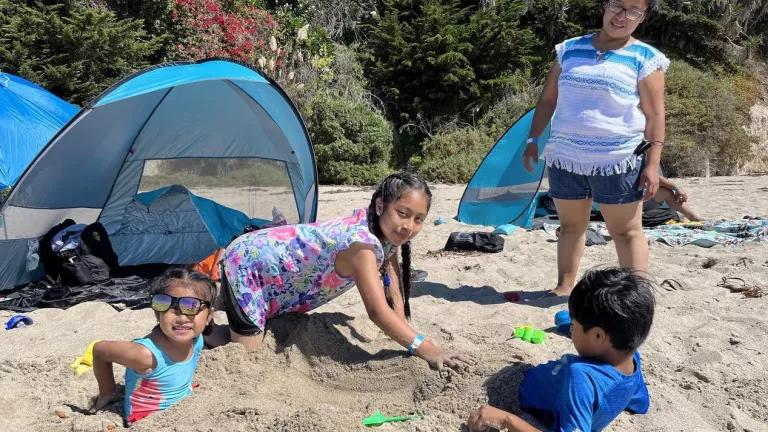CA 30x30 for Ocean Starts Strong, Still Plenty of Work Ahead
The final strategy brings California a big step closer to successful 30x30 implementation. This is a welcome change from when CNRA first released its draft version of the Pathways Strategy.

Anacapa Island, California
On Earth Day, the California Natural Resources Agency (CNRA) released its final Pathways to 30x30 Strategy – which lays out how California will reach its goal of conserving 30 percent of its lands and waters by 2030.
To recap, scientists around the world are calling for the protection of at least 30 percent of the world’s ocean and 30 percent of all lands and inland waters by 2030 as a way of protecting biodiversity and increasing resilience to climate change. This goal, known as 30x30, is necessary to stem the extinction crisis and would be a powerful safeguard to protect us from the worst effects of climate change. California is in the lead with an executive order from Gavin Newsom as the first state to take on this ambitious and necessary initiative. Of all fifty states, California’s biodiversity is the most imperiled, meaning that we may have the most to gain from seizing the opportunity of this ambitious initiative.
The final strategy brings California a big step closer to successful 30x30 implementation. This is a welcome change from when CNRA first released its draft version of the Pathways Strategy. At that time we explained our concerns that the state’s approach to 30x30 for the ocean and coast would not result in protections that will meaningfully and equitably protect biodiversity. The final strategy brings California a big step closer to successful 30x30 implementation. Now we are pleased to see the state’s definition of “conserve” more directly reference biodiversity and the inclusion of a more diverse array of ocean users in the section on government partnerships. It is encouraging to see CNRA reference the large body of domestic and international research that shows that highly and fully protected marine protected areas (MPAs) are the most successful tools for protecting marine biological diversity and intact ecosystems. With the final strategy released, CNRA will now shift its focus to implementation.
In the transition from planning to implementation, there are a few key areas on which the state should focus in order to make this initiative as successful as possible. The first is ensuring that ocean areas protected under 30x30 are representative of the myriad of marine ecosystems found in California. Within California’s existing network of marine protections, some areas like estuaries and shallow sand habitats are underrepresented. These areas are full of unique species and could hold keys to future climate change adaptation. Conserving areas representative of the larger diversity of California’s marine ecosystems is integral to protecting biodiversity and providing resilience to climate change for the state’s plant, animal, and human residents.

Humpback Whales Feeding Off California's Coast
Clarifying key terms will be a necessity during implementation. While flexibility is important when trying to achieve such an ambitious plan, some terms will need to be clearly defined to reach the goals stated in Governor Newsom’s executive order. For example, the final strategy states that “limited take State MPAs provide an excellent model for other jurisdictions looking to balance biodiversity conservation with sustainable, well managed commercial and recreational fishing.” However, we know that scientists generally observe limited biodiversity benefits when industrial fishing is permitted in protected areas. Therefore, providing more clarity on what terms like “limited take” mean in practice will serve the state well in trying to reach the biodiversity goals of 30x30. The devil is in the details, and in this moment of significant urgency and ambition, being clear about these details will certainly impact the success of this initiative and movement.
For more on the takeaways from the land and freshwater components of the final Pathways strategy, you can read the thoughts from my colleagues Kate Poole and Helen O’Shea here.
California’s Pathways to 30x30 strategy is a good step in leading our nation towards its conservation goals. Climate change is an enormous, rapidly evolving threat that is hitting us harder and faster than anticipated. Protecting biodiversity is key to the adaptation of ecosystems and our resilience in the face of climate change. We commend the state of California for its ambition in getting the ball rolling on this global initiative. We also recognize that there is still much work to be done to ensure that the state’s 30x30 movement leads to major gains for disadvantaged communities, communities of color, tribes, and for nature climate change is here, and if we are to protect our world for future generations, we cannot afford to relent. Integrating protection of natural resources is key to combatting climate change, and we look forward to the implementation of 30x30 and doing all that we can to support and further efforts to conserve our planet.



